Plugins! Whether VST, AU, or AAX — or even CLAP or Linux based variants — plugins are a key part of a computer-based music production setup. They extend the functionality of a DAW with new capabilities, instruments, effects, and utilities, and can complement or even replace music production hardware.
Do you need many plugins if you have a DAW with a broad collection of built-in tools and a raft of hardware? Maybe not. It’s always tempting to explore though, and often inspiration comes from trying something new… and the good news is there are hundreds of plugins that won’t cost a penny just waiting for you to install and see if they can spark something creative within you!
So, let’s take a look at ten inspiring, useful, and in every case, money-saving plugins you can install and play with right now!
Vital
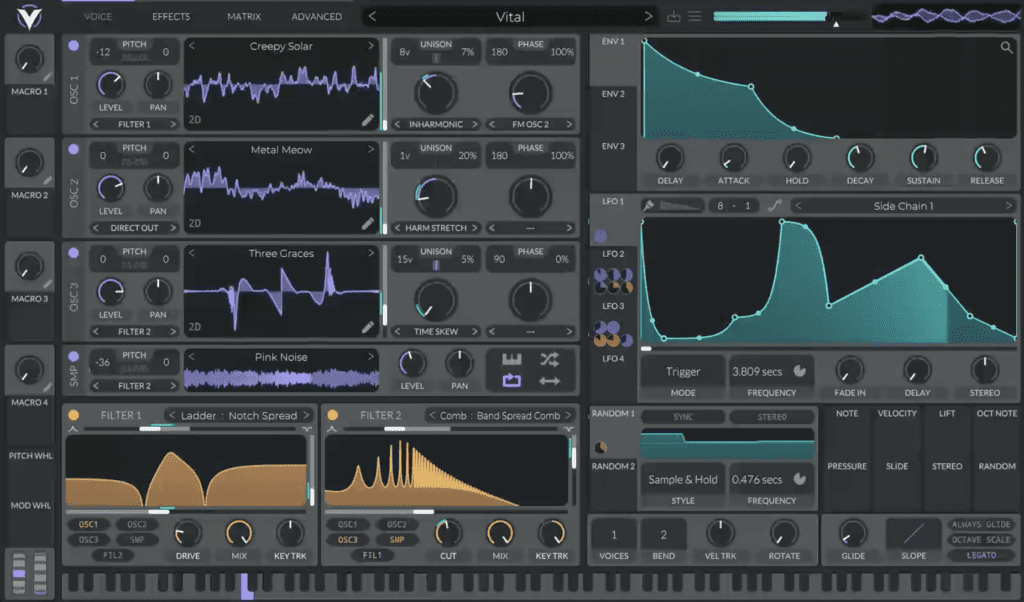
Wavetable synths have long been an incredibly popular tool for music producers and sound designers. As an approach to synthesis, having oscillators that can freely morph between different, complex and harmonic waveforms before they even hit the filters and envelopes broadens the possible palette of sound a wavetable synth can generate to almost infinite proportions.
Native Instruments’ Massive kicked off the wavetable synth craze in the mid 2000s, and Xfer Records’ Serum has held the ‘ultimate wavetable synth’ crown for many years. In the past couple of years, though, new kid on the block Vital has turned things on their head for one killer reason: It’s free. It’s not just free because it’s not worth paying for, its features and capabilities are close to being on par with Serum and yet it won’t cost you a dime, penny, or whatever your smallest division of currency is.
Consisting of three wavetable oscillators, a sampled noise oscillator, three envelope generators, four LFOs, two random noise envelopes, two filters, nine effects, extensive unison, tuning, accuracy tweaking, and more or less infinite modulation of everything the synth can do, Vital is incredibly well featured and the sound design potential of it is astounding.
Load your own wavetables in, load samples that will be converted to wavetables, share presets… if you’ve been considering Serum or Massive X, and even if you have them and fancy something a little different to get the creative juices flowing, Vital is a must-have.
The free version is completely fully featured, and there are some paid tiers with more extensive included presets and wavetables. Go wild.
Link: Vital.audio
Surge XT

Surge XT is insane. A true testament to the power of the people, Surge XT is a free open source synth plugin that is so well featured that it can actually be intimidating. Surge XT can do pretty much everything: subtractive, wavetable, FM, physical modelling and more, two filters that can each be set to anything you could want, 12 (yes 12) LFOs and envelope generators, completely free routing of the signal path… and a breathtaking complement of effects.
It’s got an easy to use, functional interface, and the only real con to Surge XT is that it’s so powerful at everything that sometimes it can feel like its interface doesn’t usher you toward any single method of creating. If you’re confident in what you’re looking to do, or you just love the idea of getting sunk into infinite possibilities, then Surge XT is a total no brainer. It might be one of the most powerful plugins ever created — and its effects section is so well featured that using it as an effects device in the chain behind another instrument device might make it the best effects plugin as well. A phenomenal achievement.
Link: Surge XT
Tritik Krush
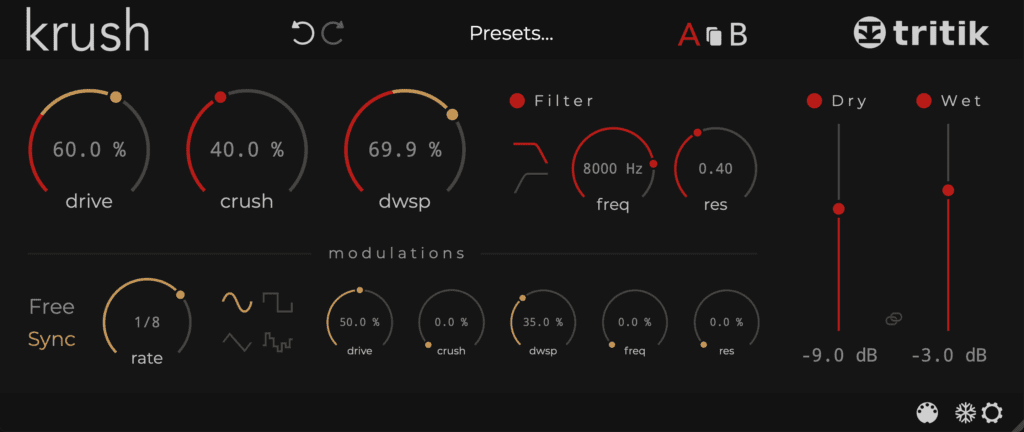
Hi-fi is overrated. If your DAW doesn’t have a good bit crushing plugin, you’re missing out on a world of crunchy, punchy sound — why do you think classic records have that ‘je ne sais quois’ that’s difficult to achieve on modern gear? Hint: old gear wasn’t as transparently perfect.
There’s more to bit crushing than simply reducing the bit depth and sample rate uniformly. How those bit depths and sample rates come to be achieved has a massive effect on the resulting sound of a bit crushed signal, and so simply dialling the numbers on an old sampler into a bit crushing plugin isn’t going to guarantee you the same sound. Krush doesn’t have in depth control over biasing, jitter, and other considerations that many premium plugins offer, but what it does do is encourage tuning by ear of the bit depth and sample rate reductions by making them percentage dials instead of discreet values.
And it’s not just bit depth and sample rate that Krush can take care of, it has both drive control and a low pass filter with resonance control that go a long way to making Krush an all-in-one ‘colour’ plugin. Add to that an LFO that can modulate any of the controls, a great series of presets, and a good interface that’s resizable, features undo and redo history, and built-in simple MIDI learn, and Krush is a bargain at twice the price. Which is free, did I mention?!
Link: Tritik Krush
Valhalla Super Massive

Everyone’s got a reverb plugin. You might even use one that comes with your DAW. Reverb is one of those effects where the conventional wisdom is ‘if you can hear it, it’s too loud’… but sometimes we don’t want a subtle reverb that lets things sit in the mix. We want something huge, otherworldly, exciting, creative.
In those scenarios, Valhalla’s Super Massive is THE plugin. Rather than make any attempt to be any good at realistic or conventional sounds, Super Massive is designed specifically for those, well, super massive types of reverb effect. It’s not meant for subtle tweaks, it’s meant for captivating and creativity inspiring hugeness. Its 18 models are astronomically named, and its controls eschew traditional reverb considerations. Don’t expect room size and pre-ringing, instead we get big dials for delay size and warp. Is Super Massive even a reverb when the delay is set to its maximum two seconds, or is it a delay? It doesn’t matter. Change modes, automate controls, get bathed in organic and ethereal sounds.
Link: Valhalla Super Massive
Spitfire Labs
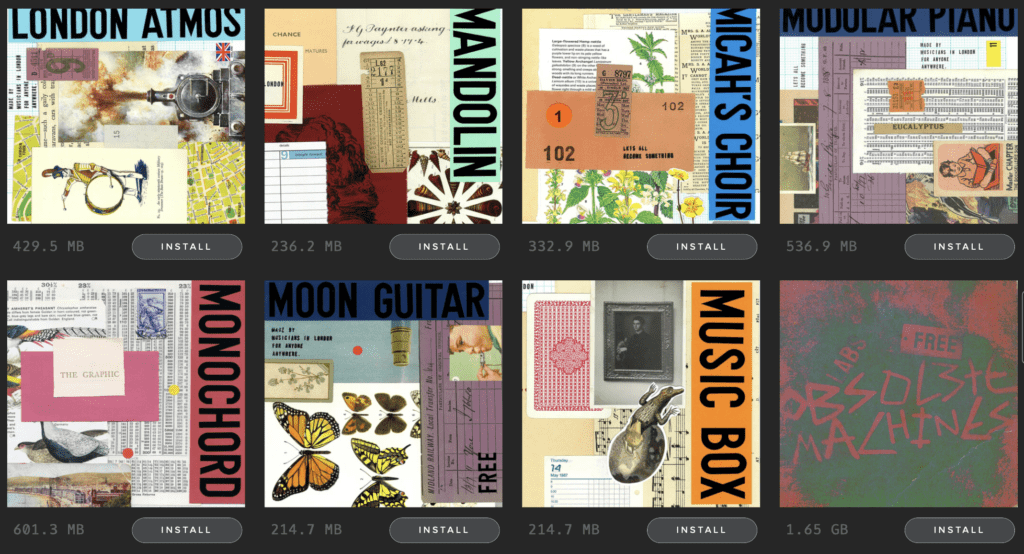
Okay this isn’t one plugin, it’s a series of individual, single instrument plugins by Spitfire Audio, one of the most prominent premium sample library developers. They’re all free though!
The aim of the Labs series by Spitfire seems to be to provide musically interesting and usable instruments that can go straight into records. No finding a ‘standard’ piano in a sampler library and adding effects until it gets some character, the character is the whole reason for the library in the first place.
At time of writing there are 155 completely free Spitfire Labs instruments. No sampler necessary, the Spitfire Labs plugin handles everything. If you’re looking for something that can kickstart some inspiration, you’ve found it.
Link: Spitfire Labs
Klanghem IVGI
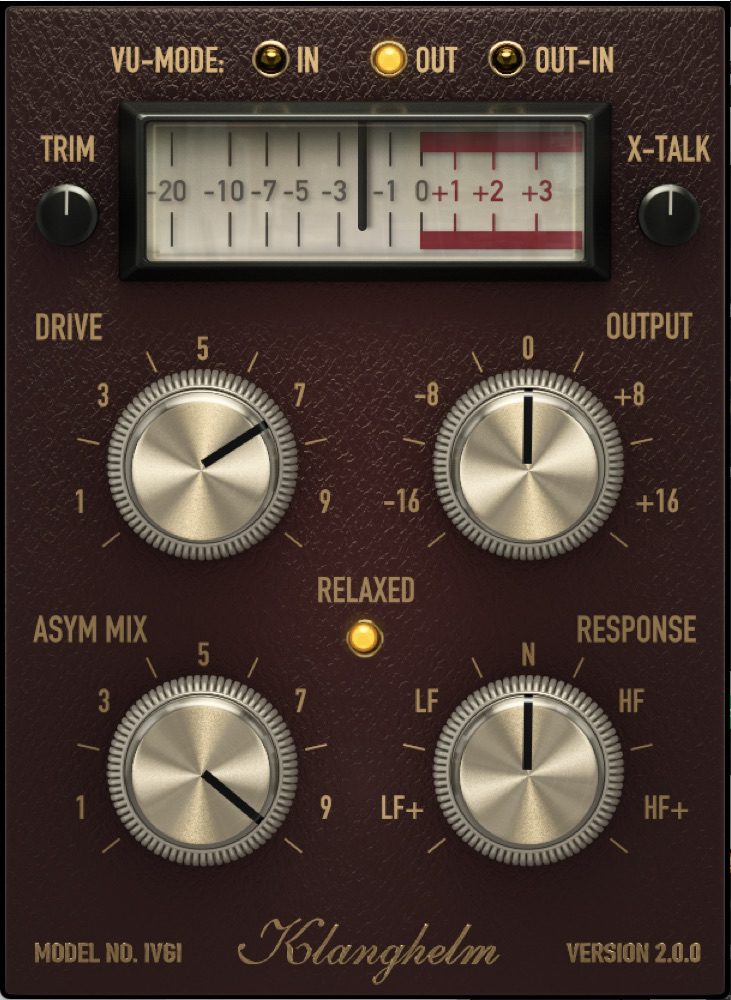
Often, saturation effects built in to DAWs are quite aggressive and difficult to get to sit just right. Saturation is just an overdriven signal, but how that signal behaves as it’s overdriven is key to how it sounds. IVGI by Klanghelm is a simple saturation dial that features under-the-hood modulation of how things are saturated — key to its ability to create an organic sounding saturation that eludes many simple basic wave shaping saturation plugins. Another key benefit of IVGI is that it features excellent level matching, taking the ‘is it just better because it’s louder?’ question out of mind and allowing us to focus on the character change of the audio.
Other than being able to tweak the tone of the saturation response with subtle crosstalk, filter, and asymmetry controls, IVGI is pretty close to being one-knob saturation. Indeed, that’s its key strength; the level matching makes it a great tool for adding character without needing to carefully level match the results!
Link: Klanghelm IVGI
LoudMax
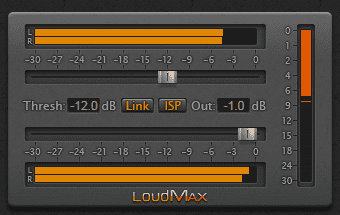
Pushing more loudness out of a signal without affecting its perceptual character is the holy grail of modern mastering for many genres. Many DAWs come with a built-in limiter that does a pretty serviceable job, and many very expensive plugins feature top-secret wizardry that can achieve more extreme boosting.
LoudMax is a simple, free, transparent brick wall limiter that just works. Pushing a few extra decibels of perceived volume out of a master signal is as simple as sliding down the threshold, and that’s all there is to it — it’s not flashy, but it’s incredibly impressive that such a powerful tool is completely free!
Link: LoudMax
TDR Nova
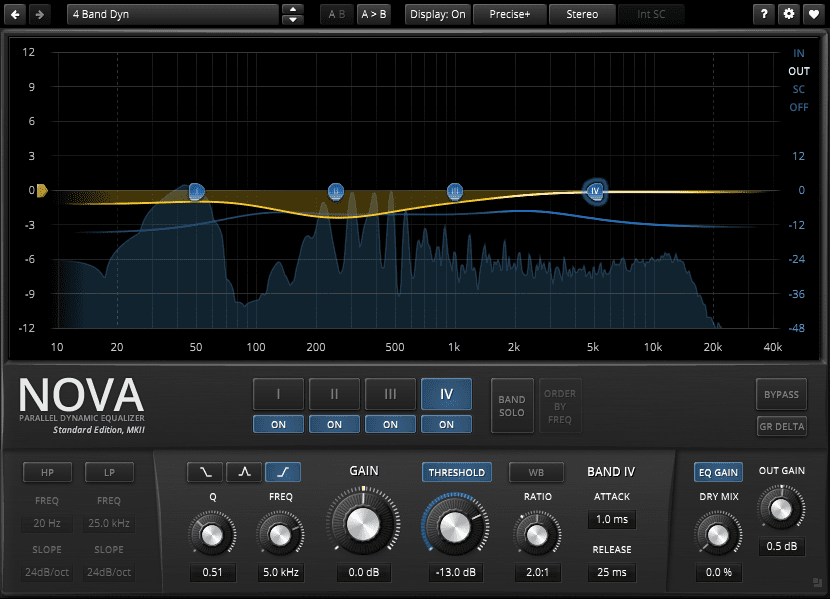
TDR Nova by Tokyo Dawn Labs is an absolutely fantastic mixing focused EQ plugin. It’s not just an EQ though, it’s a fully featured multiband dynamics processor the likes and quality of which is extremely rare to find for free.
There is almost nothing not to recommend with TDR Nova. For €60 the ‘Gentleman’s Edition’ provides more bands and more in-depth control, but the free TDR Nova is an absolutely awesome EQ and dynamics processor — just be aware that it will introduce around 4ms of latency to your signal at 44.1Khz sample rates, so it’s best used during the mix stage of your production.
Link: TDR Nova
Flux Bittersweet
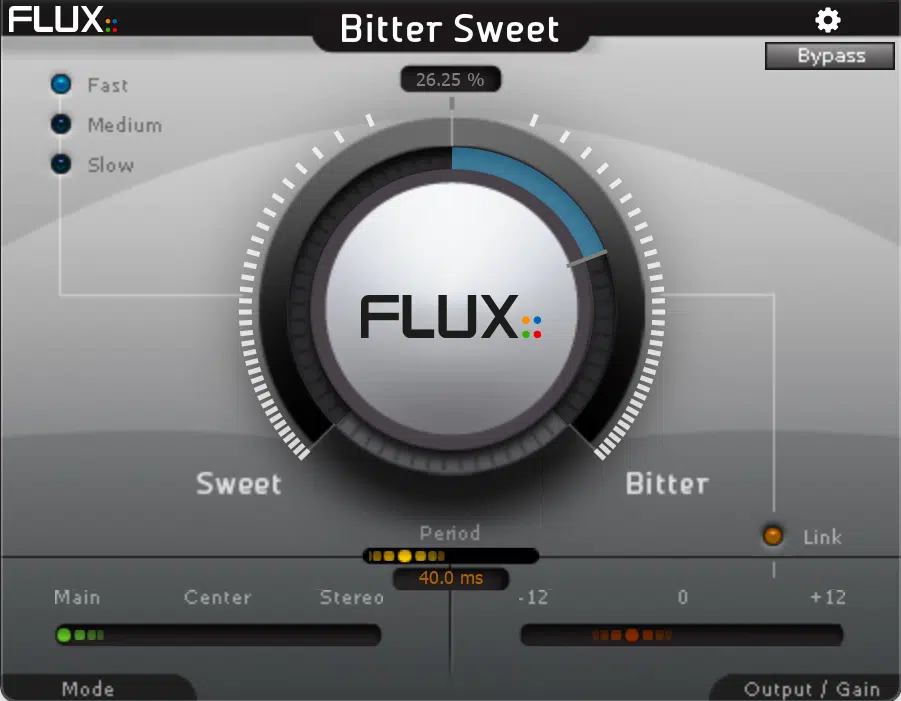
There’s nothing quite like a one knob control plugin when your focus is on making music, and there’s nothing like a transient shaper for performing a task with a very specific goal: making a signal more biting or more smooth. Oh, and there’s nothing quite like free, either!
Bittersweet is as simple as it gets: turn a dial to tame transients or make them more aggressive. Smooth out samples with a bit too much bite, give drum breaks more punch, transient shapers are really useful and when they’re this easy to use, they can get a bit addictive. Well, it’s good to know the tool for the job is at our fingertips, anyway!
Link: Flux Bittersweet
Native Instruments Supercharger

The great thing about Supercharger by Native Instruments, aside from it being a one knob compressor that has simple ‘punch’ and ‘dirt’ switches to change its character, is that it’s part of Komplete Start. Komplete Start is a suite of free plugins from Native Instruments that are all really high quality and interesting, especially for new music producers. You only have to install what you’re interested in, though — and Supercharger is definitely interesting.
I’ve already mentioned my affinity for one knob plugins, and Supercharger is no different. From subtle to completely squashed, Supercharger’s big compress dial is all you need to find the sound you’re looking for. Rather than fiddle with attack, release, and ratio, just decide ‘more’ or ‘less’, and the plugin does the rest. There’s even a clever light above the input trim dial that shows the optimum level for the single knob algorithm to do its thing, whether that thing is warming up a vocal or making drums smash through walls…
Link: Native Instruments Komplete Start
Where Next?
Good question! It’s always worth remembering that more plugins doesn’t equal better music. In fact, that’s one of the mistakes that music producers make very often. Sometimes, sticking what you’ve got is the best thing you can do — and most DAWs have a great complement of built in instruments and effects, depending on the version you get. Ableton Live is a great example of a DAW with fantastic built in devices, and the version you go for will include different numbers of them. For more information, why not check out our What is Ableton post that’ll make everything clear?!
